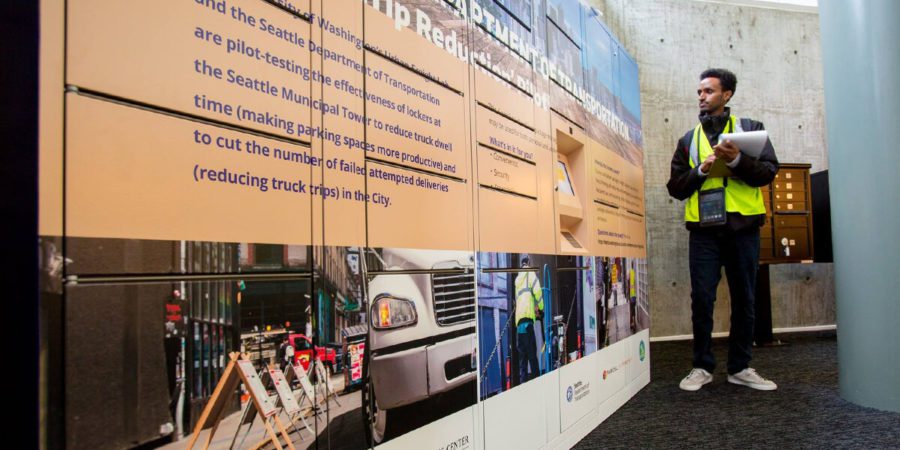
Seattle Municipal Tower
This content originally appeared on The University of Washington’s Supply Chain Transportation & Logistics Center website.
| “In this research we’ve proven that parcel lockers can dramatically reduce delivery times; that the obstacles of ownership and multiple stakeholders can be overcome; that customers are interested in, and will use, the lockers. In short, we’ve proven that lockers are a good solution for some of our urban freight challenges and should be part of our solutions toolkit.” |
|---|
| Dr. Anne Goodchild, Founding Director of the Supply Chain & Logistics Center and Professor of Civil and Environmental Engineering at the University of Washington |
Part of the Final 50 Feet Research Program, the University of Washington’s Urban Freight Lab engaged multiple partners and funding sources to successfully pilot test a common carrier locker system (open to all retail and multiple delivery firms) that created delivery density in the Seattle Municipal Tower.
The pilot tested the ability of new mini-distribution centers such as smart lockers to create delivery density and reduce the time delivery people have to spend in urban towers to complete the work. The Lab collected “before” and “after” data to evaluate the pilot’s premise: that when delivery trucks can pull into a load/unload space that’s close to a mini-distribution node with delivery density (lots of deliveries in one place), everyone benefits. Lab members UPS and the U.S. Postal Service participated in this pilot, so any package they delivered to the building went into the locker system. The pilot was open to the first 100 Municipal Tower tenants who signed up to use the lockers from March to April 2018.
This pilot reduced the average amount of time parcel delivery personnel spent doing their work in the 62-floor office tower by 78%, when compared with going floor-to-floor, door-to-door in the tower. It demonstrates the UFL’s unique capability to develop cross-functional business and city working partnerships, gain senior executives’ participation in research, and effectively manage innovative and complex projects that have a high level of uncertainty. This pilot provides evidence that the common carrier locker system strategy can achieve a significant reduction in delivery time.
Learn more about the study here and view the final research report here.

